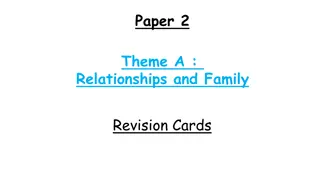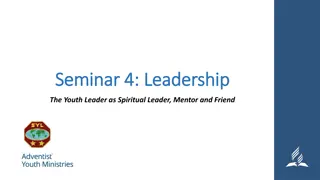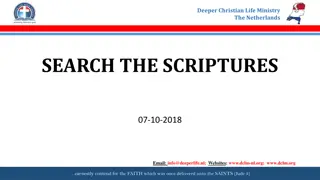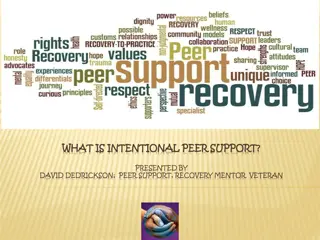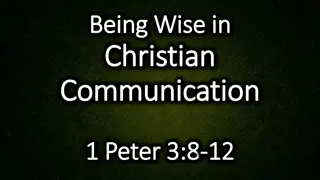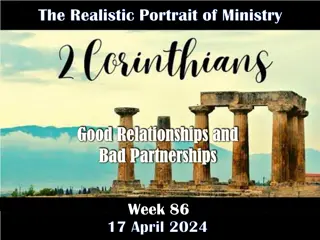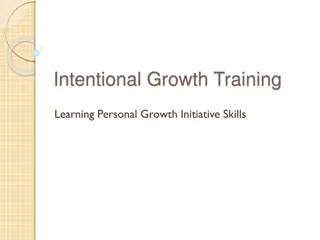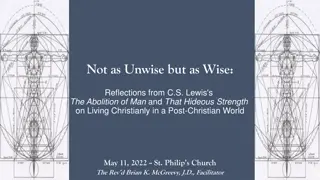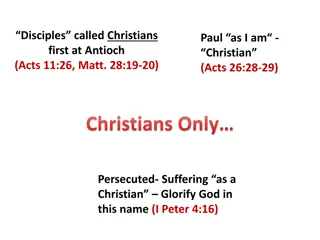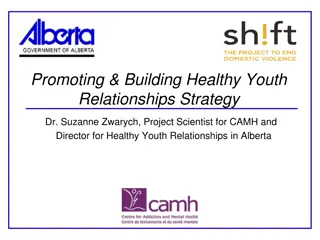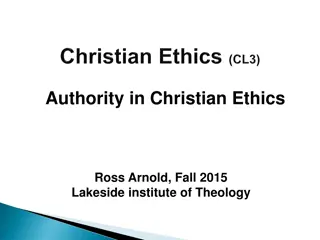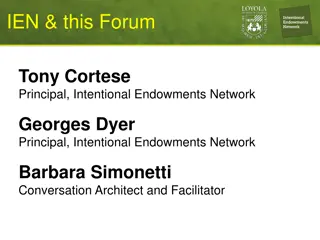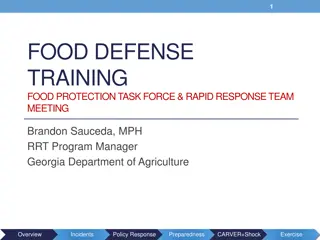Understanding the Enneagram for Intentional Christian Relationships
The Enneagram is a personality system rooted in ancient Christian traditions, now widely used for understanding individual traits and behaviors in modern times. Developed from the concept of nine points representing different personality types, it is a tool to explore vices, virtues, and personal growth. This system, compared to Myers-Briggs, emphasizes what and how individuals think, explaining the nature and nurture of personality types. Guidelines for using the Enneagram stress self-acceptance and development, focusing on unique qualities within each type. The Enneagram categorizes individuals into nine distinct types, each with its own strengths and growth opportunities. Through self-awareness and understanding, individuals can engage in intentional Christian relationships based on empathy and compassion.
Download Presentation

Please find below an Image/Link to download the presentation.
The content on the website is provided AS IS for your information and personal use only. It may not be sold, licensed, or shared on other websites without obtaining consent from the author. Download presentation by click this link. If you encounter any issues during the download, it is possible that the publisher has removed the file from their server.
E N D
Presentation Transcript
THE ENNEAGRAM Intentional Christian Relationships
REVIEW (PLUS) Last week Enneagram Definition: Greek, literally: nine-figure. It means a picture with nine points. Used by Coptic Christians in the 400 s A.D. 7 deadly sins Evagrius Ponticus 346 399 A.D. (8 evil thoughts) His contributions were aimed at helping monks understand their own pattern of sin. Gregory the Great (Pope in the 500 s A.D.) modified Evagrius work into the 7 deadly sins. This is the basis of our modern enneagram system.
ENNEAGRAM MODERN HISTORY Oscar Ichazo Developed the ideas of personality types used in the Enneagram. Claudio Naranjo Chilean psychiatrist further developed the ideas and taught to a larger audience in the 1960 s and 70 s. In the early 1980 s, Jesuits in the Catholic church began teaching the Enneagram as vices and virtues that accompany personality types. Seminaries began teaching the Enneagram in the 1990 s. In the last decade, the Enneagram has become widely known among the Christian culture.
ENNEAGRAM VS MYERS-BRIGGS Myers-Briggs Enneagram Describes HOW we think Describes WHAT we think Explains NATURE Explains NURTURE
GUIDELINES FOR USING THE ENNEAGRAM People don t change from one type to another. It s like when cement sets up it s permanent. But! Once set, the rough edges can be polished. Types are not inherently male nor female. All types are represented nearly equally by both. The numbers are just used as labels. They aren t scores or values, just easy-to- use abbreviations for each type. No type is better or worse than any other. In some societies, certain traits are valued more than others. Depending on our situation, we may not want to believe we are the type that we are. Each has redeeming qualities you can develop. It has been said: The description that makes you feel the most uncomfortable is often the type you are. Ugly Duckling Syndrome It s what you become that matters most.
1: Perfectionist/Reformer 2 : Supportive Advisor
4 : Romantic Individualist 3 : Succesful Achiever
5 : Investigative Thinker 6 : Loyal Guardian
8 : Protective Challenger 7 : Entertaining Optimist
RESOURCES Online: 9 : Peaceful Mediator www.YourEnneagramCoach.com www.EnneagramInstitute.com www.IanCron.com Books: The Road Back To You -Suzanne Stabile & Ian Morgan Cron The Path Between Us -Suzanne Stabile The Sacred Enneagram -Christopher L. Heuertz Podcasts: Sleeping at Last Ryan O Neal (w/ Chris Heuertz) Typology Ian Morgan Cron The Enneagram Journey Suzanne Stabile











